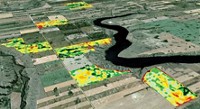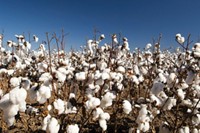Advertisement
Grab your lab coat. Let's get started
Welcome!
Welcome!
Create an account below to get 6 C&EN articles per month, receive newsletters and more - all free.
It seems this is your first time logging in online. Please enter the following information to continue.
As an ACS member you automatically get access to this site. All we need is few more details to create your reading experience.
Not you? Sign in with a different account.
Not you? Sign in with a different account.
ERROR 1
ERROR 1
ERROR 2
ERROR 2
ERROR 2
ERROR 2
ERROR 2
Password and Confirm password must match.
If you have an ACS member number, please enter it here so we can link this account to your membership. (optional)
ERROR 2
ACS values your privacy. By submitting your information, you are gaining access to C&EN and subscribing to our weekly newsletter. We use the information you provide to make your reading experience better, and we will never sell your data to third party members.
Business
BASF To Boost Crop Protection Spending
Strong demand for commodities spurs two-year expansion project
by Melody Voith
August 5, 2008

Amid rising demand for crop commodities, BASF Crop Protection will invest more than $225 million over the next two years to increase its capacity to produce fungicides, insecticides, and herbicides at production facilities in Germany, France, Brazil, and the U.S.
The firm anticipates that most of the new capacity will be on-line by 2010 "at the latest" and will include its two main fungicides, F 500 and boscalid; the insecticide fipronil; and the herbicide metazachlor. The expansion is in addition to planned spending for BASF's new herbicide, Kixor, targeted for release in 2009.
The investments will help BASF, the world's largest chemical company, take advantage of strong demand for corn, soybeans, wheat, and canola crops. Like agrochemical competitors Dow and DuPont, BASF has seen its 2008 agriculture revenues and profits soar due to higher volumes and prices.
For corn, the increase in demand has been driven, in part, by its use as an ethanol feedstock. Joseph Glauber, chief economist for the U.S. Department of Agriculture, forecasts that production of the fuel will claim 31% of next year's corn harvest and that corn will remain the primary ethanol feedstock for the foreseeable future. In addition to the increasing use of crops for energy production, BASF forecasts that long-term trends—such as population growth, climate change, and increased meat consumption—will continue to drive high demand for commodities.
"Farmers are seeking to capitalize on the high prices for agricultural commodities," says Michael Heinz, president of BASF's Crop Protection division. "That means getting the most out of every acre of farmland with innovative crop protection products."




Join the conversation
Contact the reporter
Submit a Letter to the Editor for publication
Engage with us on Twitter